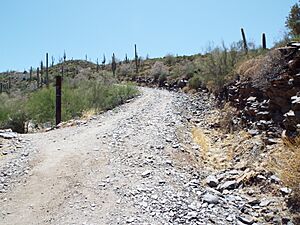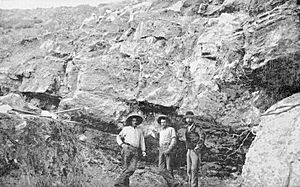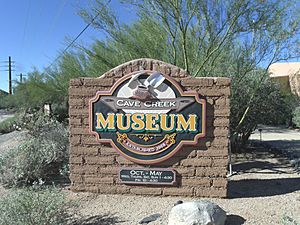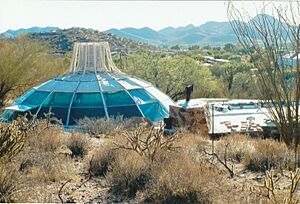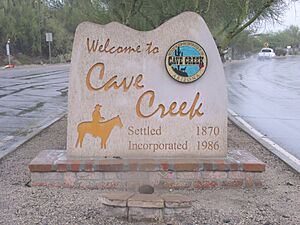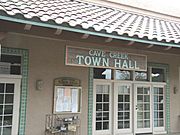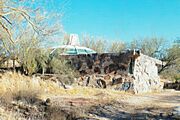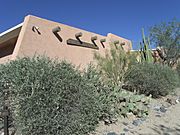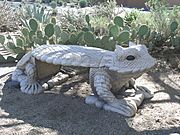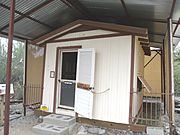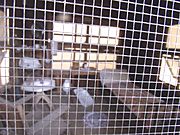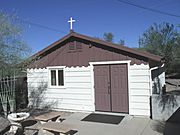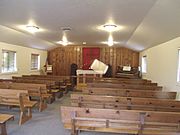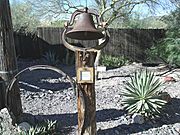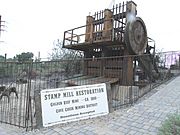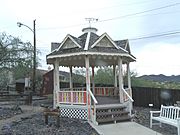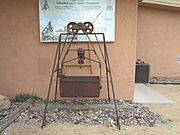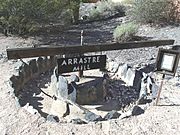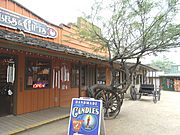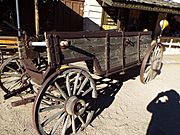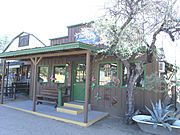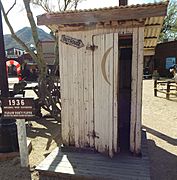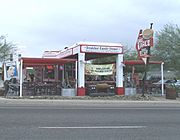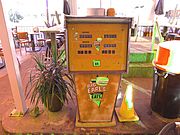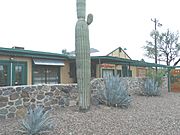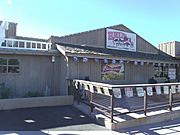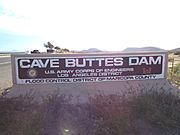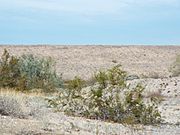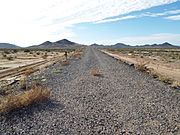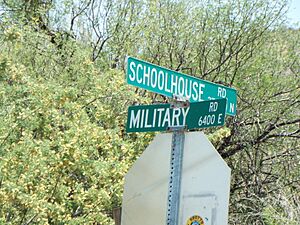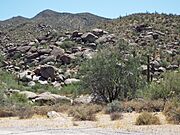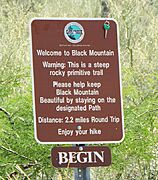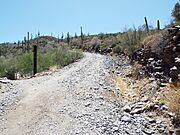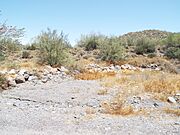List of historic properties in Cave Creek, Arizona facts for kids
Quick facts for kids
List of historic properties
in Cave Creek, Arizona |
|
|---|---|

Original 1890 Cave Creek house
(Now a Native-American jewelry store) |
|
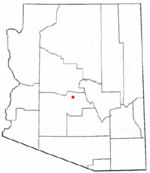
Location in Maricopa County and the state of Arizona
|
This article shares a list and photos of important historic buildings and monuments in Cave Creek, Arizona. Cave Creek is a town located in Maricopa County, Arizona. Long ago, the ancient Native-American tribe called the Hohokam lived here. In the 1800s, this area was part of Mexico. It became part of the United States in 1848 after the Mexican Cession. Cave Creek officially became a town in 1986. Some of its old buildings are even listed on the National Register of Historic Places.
Contents
Discovering Cave Creek's Past
Cave Creek and the land around it were first home to the Hohokam people. "Hohokam" is a word from the Pima language. It describes a group of people who lived in the Sonoran Desert in North America. The Hohokam might be the ancestors of today's Akimel O'odham and Tohono O'odham peoples. No one knows why the Hohokam left the area. Later, the Tonto Apaches claimed this land.
The Stoneman Military Trail
In 1865, Major General George S. Stoneman was a U.S. Cavalry officer. He was stationed at Camp McDowell in the Arizona Territory. He wanted to find a shorter path between Camp McDowell and Fort Whipple. He explored an old Native-American trail. This trail went through the McDowell Mountains and Black Mountain. Today, these areas are near Fountain Hills and Cave Creek. This path became known as the "Stoneman Military Trail".
General Stoneman found a place with a flowing creek and bubbling springs. This spot later became known as Cave Creek. Soon, new settlers began to arrive. By 1877, Jeriah and Amanda Wood opened the "Cave Creek Station." This was a place where travelers could eat and stay overnight.
Gold Mining in Cave Creek
In 1873, the Cave Creek Mining District was created. It covered a large area of 144 square miles. William Rowe found a rich gold mine on Gold Hill in 1874. This discovery brought many miners and settlers to the area. The first recorded gold mine was called the Continental. Another important mine was the Golden Reef Mine.
Mining Equipment and History
In 1880, a Golden Reef Stamp Mill was built in California. It was then brought to Cave Creek. A stamp mill crushes rocks to get out the gold. The mine also had a tramway car system. This system helped move materials around.
The arrival of new settlers made the Tonto Apaches upset. This led to a conflict known as the "Cave Creek Ambush" in 1882. It was the last skirmish of the Apache Wars in Cave Creek. The Golden Reef Mine closed in 1993. The stamp mill and tramway car were later given to the Cave Creek Museum.
The Cave Creek Museum
In 1920, land south of Black Mountain became available for homesteading. The climate here was thought to be good for people with tuberculosis. So, many "tuberculosis cabins" were built in Cave Creek.
Museum Exhibits and History
The Cave Creek Museum has one of these Tubercular Cabins. It is listed on the National Register of Historic Places. This cabin was part of the Desmount Sanitarium, built in 1920. The Cave Creek Museum opened in 1970. It was started by the Cave Creek Historical Society, which formed in 1968.
The museum has several outdoor exhibits. These include the First Church of Cave Creek, built in 1947. You can also see the Golden Reef Stamp Mill and the Cave Creek Bandshell. The bandshell was built in 1900 and used to be in downtown Cave Creek. The museum also has an Arrastre. This is a simple crushing mill, often powered by a donkey or ox, built around 1900. Arrastre means "to drag" in Spanish.
Other Historic Places
Cave Creek has many other historic buildings and items. Some of these old places have been turned into new businesses.
For example, the Cave Creek Inn was built in 1920. It is Cave Creek's oldest business building still operating. It is now a restaurant. The Cave Creek Service Station was built in 1925. It was added to the National Register of Historic Places in 2000.
Frontier Town and Unique Buildings
Frontier Town is another interesting place. It has some of Cave Creek's original buildings. One is the former Leather Mill building, built in the late 1880s. It is one of the oldest buildings still standing in Cave Creek. There is also a 1936 Works Progress Administration (WPA) outhouse on display.
"The Dome in the Desert" is a very unique building. It was built in 1949 and is shaped like a dome. It was listed on the National Register of Historic Places in 2018. This building is important because of its special design. Architects Paolo Soleri and Mark Mills created it to be perfect for living in the desert.
Historic structures and artifacts
Here are photos of the Cave Creek Museum and some of Cave Creek's historic buildings and items.
-
The Cave Buttes Dam marker.
Historic Stoneman Military Road
These are images of the historic Stoneman Military Road in Cave Creek.
See also


